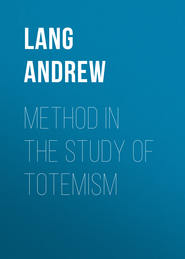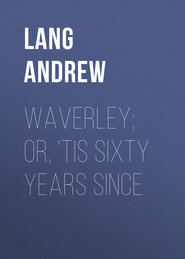По всем вопросам обращайтесь на: info@litportal.ru
(©) 2003-2025.
✖
The Puzzle of Dickens's Last Plot
Настройки чтения
Размер шрифта
Высота строк
Поля
Who was Jasper?
Who was Jasper? He was the brother-in-law of the late Mr. Drood, a respected engineer, and University man. We do not know whence came Mrs. Drood, Jasper’s sister, but is it likely that her mother “drank heaven’s-hard” – so the hag says of herself – then took to keeping an opium den, and there entertained her son Jasper, already an accomplished vocalist, but in a lower station than that to which his musical genius later raised him, as lay Precentor? If the Princess Puffer be, as on Mr. Cuming Walters’s theory she is, Edwin’s long-lost grandmother, her discovery would be unwelcome to Edwin. Probably she did not live much longer; “my lungs are like cabbage nets,” she says. Mr. Cuming Walters goes on —
“Her purpose is left obscure. How easily, however, we see possibilities in a direction such as this. The father, perhaps a proud, handsome man, deserts the woman, and removes the child. The woman hates both for scorning her, but the father dies, or disappears, and is beyond her vengeance. Then the child, victim to the ills in his blood, creeps back to the opium den, not knowing his mother, but immediately recognized by her. She will make the child suffer for the sins of the father, who had destroyed her happiness. Such a theme was one which appealed to Dickens. It must not, however, be urged; and the crucial question after all is concerned with the opium woman as one of the unconscious instruments of justice, aiding with her trifle of circumstantial evidence the Nemesis awaiting Jasper.
“Another hypothesis – following on the Carker theme in ‘Dombey and Son’ – is that Jasper, a dissolute and degenerate man, lascivious, and heartless, may have wronged a child of the woman’s; but it is not likely that Dickens would repeat the Mrs. Brown story.”
Jasper, père, father of John Jasper and of Mrs. Drood, however handsome, ought not to have deserted Mrs. Jasper. Whether John Jasper, prematurely devoted to opium, became Edwin’s guardian at about the age of fifteen, or whether, on attaining his majority, he succeeded to some other guardian, is not very obvious. In short, we cannot guess why the Princess Puffer hated Jasper, a paying client of long standing. We are only certain that Jasper was a bad fellow, and that the Princess Puffer said, “I know him, better than all the Reverend Parsons put together know him.” On the other hand, Edwin “seems to know” the opium woman, when he meets her on Christmas Eve, which may be a point in favour of her being his long-lost grandmother.
Jasper was certainly tried and condemned; for Dickens intended “to take Mr. Fildes to a condemned cell in Maidstone, or some other gaol, in order to make a drawing.”[6 - So Mr. Cuming Walters quotes Mr. Hughes, who quotes Sir L. Fildes. He believes that Jasper strangled Edwin with the black-silk scarf, and, no doubt, Jasper was for long of that opinion himself.] Possibly Jasper managed to take his own life, in the cell; possibly he was duly hanged.
Jasper, after all, was a failure as a murderer, even if we suppose him to have strangled his nephew successfully. “It is obvious to the most excruciatingly feeble capacity” that, if he meant to get rid of proofs of the identity of Drood’s body by means of quicklime, it did not suffice to remove Drood’s pin, watch, and chain. Drood would have coins of the realm in his pockets, gold, silver, bronze. Quicklime would not destroy these metallic objects, nor would it destroy keys, which would easily prove Drood’s identity. If Jasper knew his business, he would, of course, rifle all of Edwin’s pockets minutely, and would remove the metallic buttons of his braces, which generally display the maker’s name, or the tailor’s. On research I find “H. Poole & Co., Savile Row” on my buttons. In this inquiry of his, Jasper would have discovered the ring in Edwin’s breast pocket, and would have taken it away. Perhaps Dickens never thought of that little fact: if he did think of it, no doubt he found some mode of accounting for Jasper’s unworkmanlike negligence. The trouser-buttons would have led any inquirer straight to Edwin’s tailor; I incline to suspect that neither Dickens nor Jasper noticed that circumstance. The conscientious artist in crime cannot afford to neglect the humblest and most obvious details.
CONCLUSION
According to my theory, which mainly rests on the unmistakable evidence of the cover drawn by Collins under Dickens’s directions, all “ends well.” Jasper comes to the grief he deserves: Helena, after her period of mourning for Neville, marries Crisparkle: Rosa weds her mariner. Edwin, at twenty-one, is not heart-broken, but, a greatly improved character, takes, to quote his own words, “a sensible interest in works of engineering skill, especially when they are to change the whole condition of an undeveloped country” – Egypt.
These conclusions are inevitable unless we either suppose Dickens to have arranged a disappointment for his readers in the tableau of Jasper and Drood, in the vault, on the cover, or can persuade ourselves that not Drood, but some other young man, is revealed by the light of Jasper’s lantern. Now, the young man is very like Drood, and very unlike the dark fierce Helena Landless: disguised as Drood, this time, not as Datchery. All the difficulty as to why Drood, if he escaped alive, did not at once openly denounce Jasper, is removed when we remember, as Mr. Archer and I have independently pointed out, that Drood, when attacked by Jasper, was (like Durdles in the “unaccountable expedition”) stupefied by drugs, and so had no valid evidence against his uncle. Whether science is acquainted with the drugs necessary for such purposes is another question. They are always kept in stock by starving and venal apothecaries in fiction and the drama, and are a recognized convention of romance.
So ends our unfolding of the Mystery of Edwin Drood.
THE END
notes
1
Landless is not “Lackland,” but a form of de Laundeles, a Lothian name of the twelfth century, merged later in that of Ormistoun.
2
Life of Dickens, vol. iii. pp. 425–439.
3
J. Cuming Walters, p. 102; Proctor, pp. 131–135. Mr. Cuming Walters used an edition of 1896, apparently a reprint of a paper by Proctor, written earlier than his final book of 1887. Hence the error as to Mr. Proctor’s last theory.
4
Mrs. Perugini, the books say, but certainly a daughter.
5
What would Weissmann say to all this?
6
So Mr. Cuming Walters quotes Mr. Hughes, who quotes Sir L. Fildes. He believes that Jasper strangled Edwin with the black-silk scarf, and, no doubt, Jasper was for long of that opinion himself.











